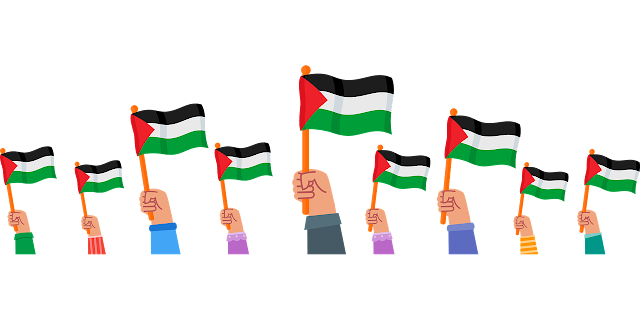The Rich Symbolism and History Behind the Palestinian Flag: A Symbol of Identity, Struggle, and Hope
The Rich Symbolism and History Behind the Palestinian Flag: A Symbol of Identity, Struggle, and Hope
Introduction:
Flags serve as powerful symbols of identity, history, and aspirations. Among them, the flag of Palestine stands as an emblem of resilience, struggle, and the quest for self-determination. In this exploration, we delve into the deep-rooted symbolism and historical significance embedded within the Palestinian flag, unveiling its evolution, colors, and the profound sentiments it represents for Palestinians worldwide.
Historical Context:
The Palestinian flag's history is deeply intertwined with the Palestinian national movement, a struggle for statehood, and the quest for sovereignty. Initially conceived during the Arab Revolt against the Ottoman Empire in the early 20th century, the flag began as a symbol of unified Arab resistance.
Design and Symbolism:
Tricolor Composition: The flag's design comprises three horizontal stripes—black, white, and green—along with a red triangle protruding from the hoist side. Each color holds distinct symbolism.
Black Stripe: Represents the Arab Abbasid Dynasty, symbolizing oppression and the Abbasid struggle against injustice and tyranny.
White Stripe: Signifies peace and reflects the hope for a peaceful and just resolution to the Palestinian-Israeli conflict.
Green Stripe: Symbolizes Islam and the fertile land of Palestine, representing agriculture, prosperity, and the Palestinian people's connection to their homeland.
Red Triangle: Positioned at the hoist side, the triangle represents the blood spilled in the struggle for independence and the sacrifices made by Palestinians.
Evolution and Adoption:
The flag's evolution mirrors the evolution of Palestinian national consciousness and aspirations. Its modern form was officially adopted by the Palestinian Liberation Organization (PLO) in 1964, becoming the recognized flag of the Palestinian people.
Symbol of Identity and Resistance:
For Palestinians worldwide, the flag holds deep emotional significance. It embodies their identity, cultural heritage, and the struggle for self-determination in the face of occupation and displacement. Displayed in protests, on rooftops, and during national events, the flag serves as a symbol of unity and defiance against adversity.
International Recognition and Controversy:
Despite its recognition by many countries and international bodies, the Palestinian flag remains a subject of controversy. Its display is sometimes seen as a political statement, eliciting varied reactions and debates about its legitimacy and the broader Israeli-Palestinian conflict.
Hope and Aspirations:
Beyond its symbolism of resistance and struggle, the Palestinian flag also embodies hope. It represents the aspirations of Palestinians for a future characterized by peace, justice, and the establishment of an independent Palestinian state.
Conclusion:
The Palestinian flag stands as more than a mere symbol; it encapsulates a profound narrative of struggle, identity, and hope. Its colors and design reflect the historical experiences and aspirations of the Palestinian people. As the symbol of a nation striving for self-determination, the flag continues to wave, carrying with it the hopes and dreams of Palestinians for a brighter and more peaceful future in their homeland.

Comments
Post a Comment
Please do not enter any spam link in the comment box.